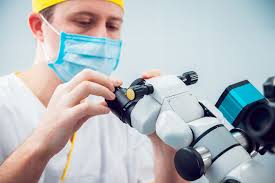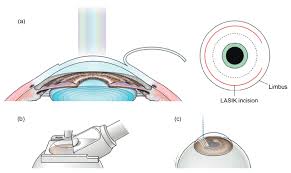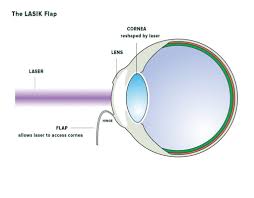Table of Contents
ToggleYes, astronauts can get LASIK. NASA and other space agencies approve LASIK and PRK as long as strict conditions are met and recovery is complete.
Vision is critical in space exploration, where precision and clarity are essential. Over the years, advancements in eye surgery technology have opened new possibilities for astronauts, ensuring better visual acuity during complex missions. But what does this mean for aspiring spacefarers, and how does LASIK fit into the rigorous requirements of space travel? Let’s explore.

Why Is Perfect Vision Crucial for Astronauts?
Astronauts face unique challenges that make excellent vision a necessity. From reading intricate control panels to observing the vast expanse of space, their eyesight must be sharp and reliable under extreme conditions. Here’s why:
- Operational Accuracy: Precision is required for navigating spacecraft, controlling robotics, and performing experiments.
- Unpredictable Environments: Space presents hazards like zero gravity and pressurisation that can amplify even minor vision issues.
- Communicating in Action: Visual signals, such as flashing indicators, must be interpreted instantly to avoid life-threatening errors.
For years, poor eyesight was a disqualifying factor for astronaut candidates, and corrective lenses posed their own problems. Glasses could fog up, or contact lenses could irritate the eyes in zero-gravity environments. Enter LASIK, a solution that offers a way for candidates to meet vision requirements while overcoming these challenges.
What Does NASA Say About LASIK for Astronauts?
NASA has not always been open to surgical vision correction. Historically, the risk of complications and the evolving nature of the procedures made LASIK unsuitable for the rigorous demands of space. However, this mindset began to change.
As of September 2007, NASA embraced refractive surgical procedures such as LASIK and PRK. The updated policy allows astronaut applicants to have undergone these surgeries, provided specific criteria are met:
- One-year Recovery Period: Candidates need to demonstrate no permanent side effects for at least one year following the procedure.
- Operative Report Required: An operative report showing the surgical procedure’s success is mandatory for those under final consideration.
This policy shift reflects confidence in advanced surgical techniques and their long-term outcomes. It is also a testament to how technology has reshaped astronaut selection criteria over time.
LASIK vs. PRK for Astronauts
While LASIK and PRK are both approved for potential astronauts, they are not identical. Each procedure has its advantages and considerations, particularly for individuals training for the extremes of spaceflight.
What Is LASIK?
LASIK, or Laser-Assisted in Situ Keratomileusis, involves creating a small flap in the cornea and reshaping the underlying tissue with a laser. Recovery is typically faster, and patients report sharper vision soon after surgery. However, the flap introduces a slight risk during extreme conditions, such as high-pressure or low-gravity environments.
What Is PRK?
PRK, on the other hand, reshapes the corneal surface without creating a flap. While the recovery period is longer, PRK is sometimes favoured for astronauts because there’s no flap, reducing the risk of complications under physical stress.
Why Does NASA Approve Both?
NASA evaluates these procedures case by case, focusing on their outcomes. Pilots and astronauts are often directed to choose PRK to avoid flap-related risks, but LASIK is increasingly trusted as techniques have improved.
Stringent Recovery and Post-Surgical Monitoring
LASIK is not an automatic green light for astronaut candidates. After surgery, potential candidates must pass rigorous assessments, including:
- Health Certifications: A comprehensive review by NASA medical examiners ensures the absence of side effects, such as dry eyes or corneal instability.
- Vision Testing in Simulations: Applicants undergo tests mimicking high-stress conditions to ensure their vision stays reliable in flight scenarios.
- Performance Tracking: Even after becoming astronauts, individuals are observed on future missions for any changes or complications.
These assessments ensure that no adverse effects from LASIK could compromise mission success or safety.
Challenges LASIK Faces in Space
While LASIK has opened doors for many aspiring astronauts, it also poses unique challenges that are specific to space:
Corneal Swelling in Zero Gravity
Microgravity environments can lead to fluid shifts, causing the cornea to swell. Although LASIK patients typically handle this well, it is closely monitored in space missions.
Vision Changes in Long-Term Flights
Prolonged time in space can lead to Spaceflight Associated Neuro-Ocular Syndrome (SANS), affecting vision due to changes in intracranial pressure. LASIK surgery does not eliminate the risk of this syndrome, so NASA continues its research to mitigate these challenges.
How Has LASIK Benefited Astronauts?
The benefits of LASIK for astronauts go beyond meeting the eligibility criteria. Here’s how they positively impact astronauts:
- Improved Safety: With perfect vision, astronauts can operate heavy equipment and perform spacewalks with confidence.
- Comfort in Space Suits: With no eyewear to accommodate, helmets fit more efficiently, reducing discomfort during mission tasks.
- Broader Talent Pool: LASIK has allowed NASA to consider a more diverse range of candidates who would previously have been disqualified due to poor eyesight.
Prominent astronauts who might have benefited from vision correction have reported smoother experiences in training and on missions. This underscores LASIK’s role in creating a modern generation of elite space travellers.
What Does This Mean for Aspiring Astronauts?
If you’re a space enthusiast dreaming of donning a space suit one day, LASIK could help you achieve the perfect vision required. However, it’s important to understand the following before undergoing the surgery:
- Consult with both an ophthalmologist and a medical examiner familiar with spaceflight requirements.
- Keep detailed records of your surgical procedure and recovery timeline.
- Be prepared to meet additional medical evaluations specific to space travel.
Bottom Line: While LASIK can enhance your chances of becoming an astronaut, it’s just one piece of the puzzle. A rigorous, multifaceted selection process ensures that only the best candidates make it to space.
Key Takeaways
Thanks to advancements in LASIK and PRK, vision correction surgery is no longer a barrier to pursuing a career in space exploration. Today’s knowledge of space medicine and vision technology has created an era where achieving visual perfection aligns beautifully with the demands of space travel.
Are you considering LASIK? Or just fascinated by how science continues to reshape possibilities? Space is calling, and now, clear vision is one less obstacle in answering it.













